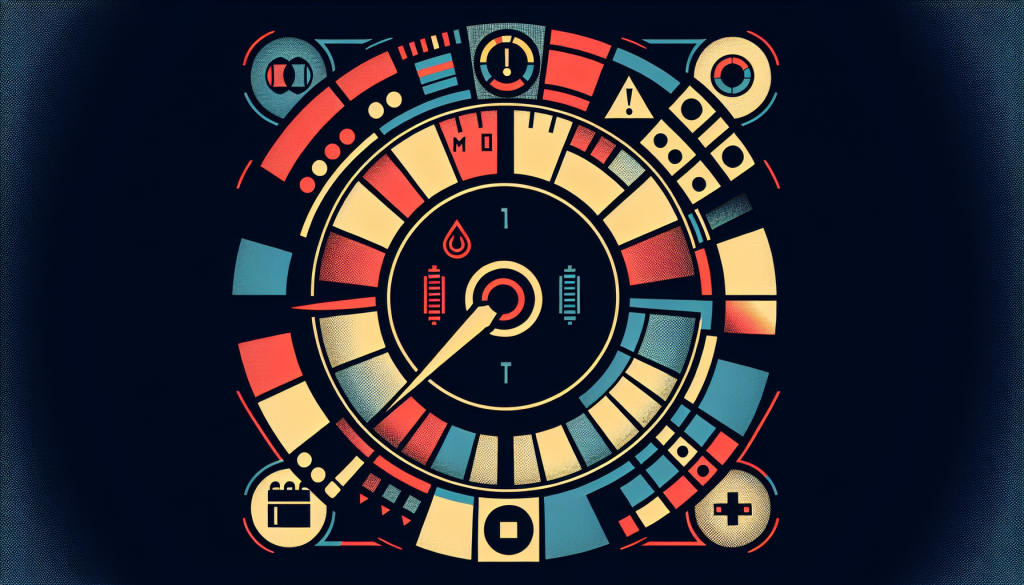Understanding Dashboard Warning Lights
Dashboard warning lights are like your car’s way of texting you about its health. Knowing what these lights mean can save you from a lot of headaches and hefty repair bills.
Why Dashboard Warning Lights Matter
These lights are your car’s early warning system. They let you know when something’s up, whether it’s a minor tune-up or a serious problem. Ignoring them? Not a good idea. It can lead to bigger issues and more expensive fixes. Paying attention to these lights can keep your car running longer and keep you safe on the road.
| Warning Light | What It Means |
|---|---|
| Check Engine Light | Something’s up with the engine. |
| Battery Light | Trouble with the charging system. |
| Oil Pressure Light | Low oil pressure, which can damage the engine. |
| Brake System Light | Possible brake system failure. |
Common Dashboard Warning Lights and Their Meanings
Knowing what these lights mean can help you act fast. Here are some common ones and what they’re trying to tell you.
| Warning Light | Meaning |
|---|---|
| Engine or emissions system issue. | |
| Problem with the electrical charging system. | |
| Low oil pressure, risking engine damage. | |
| Potential brake system problem. | |
| Anti-lock Braking System (ABS) malfunction. | |
| Engine coolant temperature is too high. | |
| Problem with the airbag system. |
For a full list of dashboard warning light symbols and their meanings, check out our dashboard warning light meanings guide.
Seeing these lights is just the start. For a proper diagnosis and fix, you’ll often need a pro. Learn more about why professional diagnosis is important in our section on Professional Diagnosis and Solutions.
Get Your Car Checked: Professional Diagnosis and Solutions
Why You Need a Pro
When those pesky dashboard lights start glowing, it’s your car’s way of saying, “Hey, something’s up!” Ignoring them can lead to bigger problems and hefty repair bills. That’s why getting a dashboard warning light diagnosis from a pro is a smart move. Experts have the right tools and know-how to figure out what’s wrong and fix it before it gets worse.
How the Pros Do It
Taking your car to a professional for a dashboard warning light diagnosis means they’ll follow a tried-and-true process to get to the bottom of the issue. Here’s what usually happens:
- First Look
- The tech will eyeball the dashboard lights and give your car a once-over.
- They’ll check the dashboard warning light fuse and other basics.
- Plugging In
- Using special gadgets, they’ll hook up to your car’s computer system.
- This scan pulls up error codes that point to specific problems.
| Tool | What It Does |
|---|---|
| OBD-II Scanner | Grabs error codes |
| Multimeter | Checks electrical stuff |
| Pressure Gauge | Measures fluid pressure |
- Decoding the Problem
- They’ll look at the error codes to figure out what’s really going on.
- Codes might show issues with the dashboard warning light battery, dashboard warning light alternator, or other parts.
| Error Code | What It Means |
|---|---|
| P0300 | Engine Misfire |
| P0420 | Catalyst System Efficiency |
| P0700 | Transmission Control System |
- Testing the Parts
- The tech will test the parts flagged by the error codes.
- This could mean checking the dashboard warning light oil levels, dashboard warning light coolant, and other fluids.
- Fixing It Up
- Based on what they find, they’ll do the necessary repairs.
- This might involve swapping out bad parts like the dashboard warning light airbag or dashboard warning light headlights.
- Reset and Check
- After fixing, they’ll reset the warning lights and double-check everything.
- A final scan ensures no error codes are left.
For more details on what each warning light means, check out our dashboard warning light guide. If you notice dashboard warning light flashing or dashboard warning light flickering, getting a pro to diagnose it is key to keeping your car safe and running smoothly.



